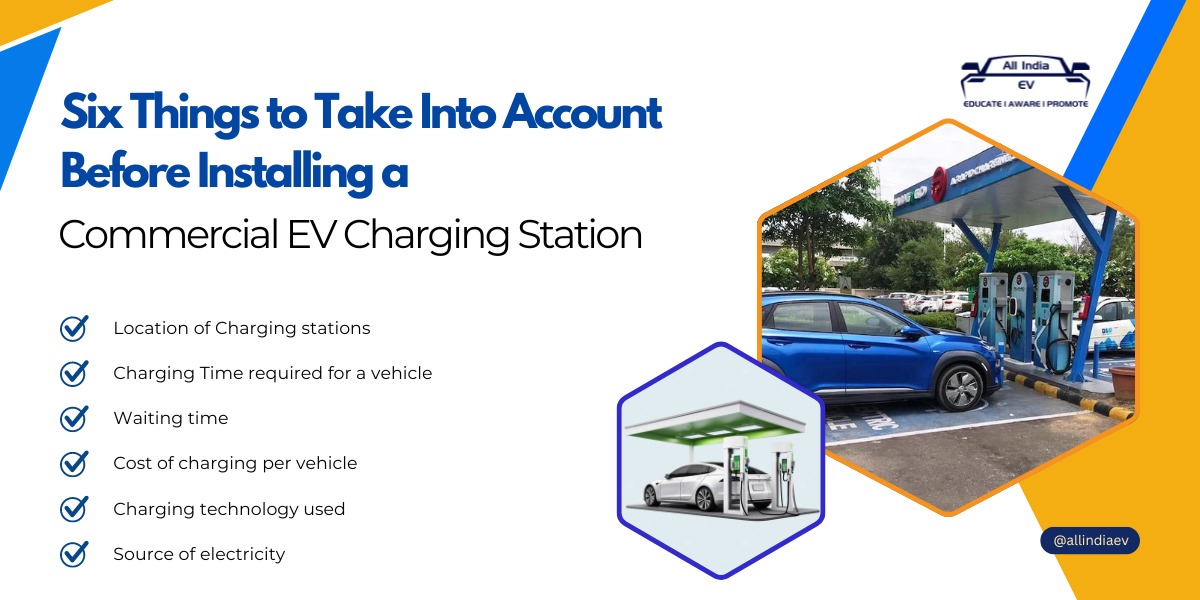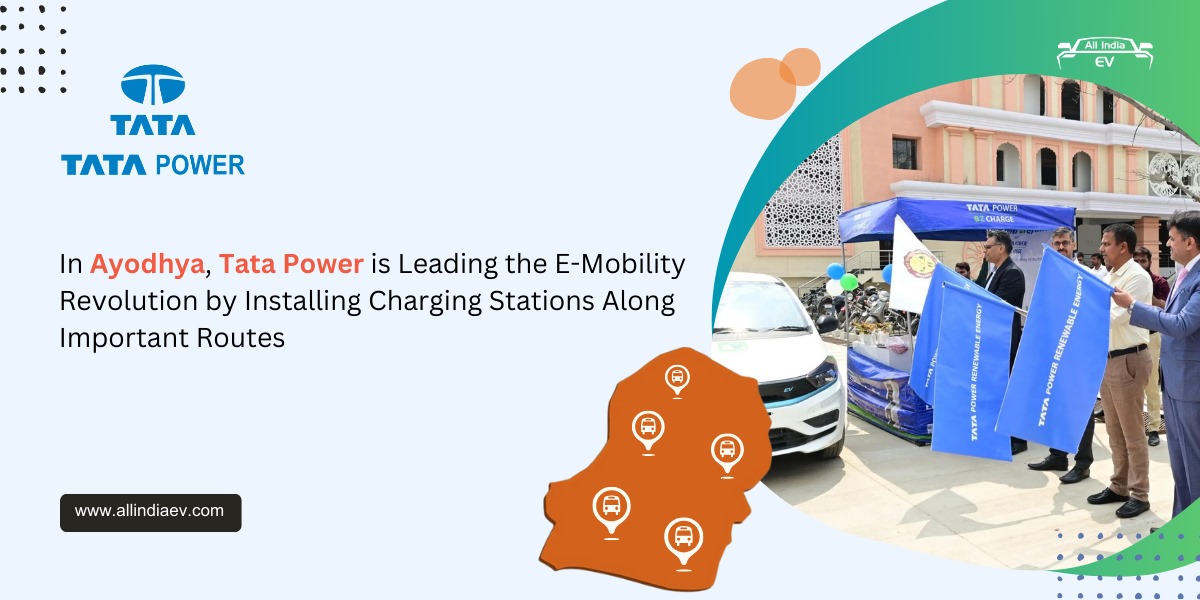
Build EV Charger? Location, power, cost, demand key.
India stands at such an inflection point, which calls for the redefinition of its energy landscape and the refashioning of an EV charger. This will set the nation on an ambitious course of delinking economic growth from its impact on the environment.
More fundamentally, of course, comes an unremitting commitment to clean energy. Governments are spearheading initiatives to phase out fossil fuels, geared toward a future where they can be totally replaced with renewable sources. This green energy revolution is likely to taper not only climate change but also imported energy dependence and reinforce energy security.
Parallel to this, India is also accelerating the transition to sustainable mobility. Electric vehicles will lead the charge in this transition—cleaner and quieter than their fossil-fuel-guzzling counterparts. Comprehensive government policies make for an enabling framework wherein the EV ecosystem can thrive, right from manufacturing to infrastructure for charging.
India’s Electric Avenue: A Charging Ahead
India’s roads are witnessing a quiet revolution. With the fast transition from innovation to standard choice, electric vehicles are not an innovation anymore. As electric rickshaws dominate the current EV scenario, the strong growth in personal electric cars, bikes, and scooters cannot be ignored.
Numbers tell a story. In barely any years, the contribution of electric vehicles to new registrations has more than quadrupled from less than 1 percent in 2018–19 to about 4 percent in 2022. That trend is only rising.
With more Indians going electric, fast chargers are in soaring demand. India now has close to 2,000 charging stations across 200 cities, with Delhi at the forefront. Presently, some principal players characterizing this charging ecosystem would include TATA Power, Magenta Power, Fortum India, Volttic, and Ather Energy.
Six Things to Take Into Account Before Installing a Commercial EV Charging Station
Location of Charging stations
Convenience in charging is paramount for any electric vehicle owner. In most cases, the sweet home doubles as the primary charging station. Plugging in overnight ensures a fully charged vehicle ready to tackle the next day’s commute. The workplace comes in at a close second, offering a convenient top-up during the workday.
However, with longer travel, public charging stations become necessary stops. Such centers work just like the traditional fuel stations, offering that much-needed energy to move on with the journey. Drivers may base their decision to choose a station on factors such as its proximity to the route or other added amenities.
As soon as the EV market grows, the availability and accessibility of charging points will become highly instrumental. Ensuring that there is an ample, robust charging infrastructure stands at the core of overcoming the anxiety many have regarding vehicle ranges and persuading more people to turn to electric.
Charging Time required for a vehicle
The duration that a charge may last has a significant impact on the choice of charging station for an EV owner. All electric vehicles have different specifications for charging and call for compatible charging infrastructure to support them. Every time a charging station cannot meet these specific needs, it affects the overall journey due to increased charging times.
Charging station operators, to increase the user experience, shall have to make provisions that give their stations compatibility with a host of EV models. If these stations can provide optimal charging speeds, they are more likely to gain customers and thereby ensure smoother adoption of electric vehicles.
Ultimately, charge time holds the key if electric transportation has to be convenient in every possible way.
Waiting time
While gasoline-powered vehicles can refuel within minutes, e-vehicles may take much longer. Long queues may form at charging outlets that are in great demand, with each driver having to wait for his turn. This problem can be solved by increasing the number of charging outlets, but this raises costs significantly.
An interesting trend is that people tend to prefer to charge at a charging station with less waiting time—even if it may cost a little more in terms of the terms of the overall duration of the charge. This really goes on to portray how important efficient charging infrastructure is and creates the need for strategies aimed at bringing down wait times.
Basically, this means that to improve the EV charging experience, a balance needs to be maintained between charging speed, infrastructure spending, and user satisfaction.
Cost of charging per vehicle
Electric vehicles have an innate attraction for offering lower costs of operation, particularly for long-distance drivers. For that reason, the prices charged at stations are major determinants in keeping this advantage alive. Therefore, with respect to this challenge, charging station operators face the very critical challenge of considering pricing strategies that ensure EV owners continue to benefit from electric mobility.
Innovative revenue streams need to be found that go beyond just fees. The incorporation of leisure facilities like restaurants or places of entertainment could attract customers and also guarantee longer dwell times. If, at a minimum, the charging experience is made agreeable, then additional revenues do not endanger customer satisfaction.
A suitable business model for a charging station is one in which a reasonable charging price, attractive additional services, and profitable operating businesses are balanced.
Charging technology used
Early in the wave of electric vehicle manufacturing, little attention was paid to the other equally relevant factor: the charging technology. With increasing adoption, it was realized that EVs require faster and much more accessible charging solutions.
Long charge times have startups racing to commercialize breakthrough technologies like inductive charging. This is the wireless kind of charging that does not use physical plugs. Though current systems are less efficient, continuous research into the technology is gradually improving its performance.
Faster, more user-friendly charging technologies are being developed around the world. The better the technologies are, the more of a revolution we should have in the way electric vehicles are charged—much more competitive compared to regular gas-powered cars.
Source of electricity
EVs have been in the limelight worldwide because of their potential to help avert GHG emissions. Nevertheless, the contribution that EVs have to environmental impact is closely related to the source of electricity used when charging. That means that although EVs themselves are emission-free at the tailpipe, the electricity powering them usually originates from power plants running on mixtures of fossil fuels.
For instance, in India, electricity generation is dominated by coal, thereby limiting the low-carbon footprints of electric vehicles. Therefore, charging station operators should make provisions for renewable sources of energy, such as solar power. This would follow from the integration of solar panels into the charging stations and would reduce reliance on the grid, basically helping to contribute to a cleaner mix of energy sources.
Through sustainable operation, the charging station will market itself to potential eco-conscious customers and investors. Governments also have incentives for renewable energy projects; thus, financial perks will be offered to the station operators.
Switching to green charging stations is no longer an environmental imperative; it is a strategic business move. The charge towards a cleaner transportation future can thus be accelerated with the help of the adoption of sustainable energy coming from charging station operators.
Building a Successful EV Charging Station: Key Considerations
An acutely successful EV charging station needs to be planned and analyzed. The market must be understood at a local scale in respect of EV type, charging preferences, and grid infrastructure to allow adaptation of the station to the customer. Business success is linked to generating revenues without sacrificing long-term sustainability.
Dynamic pricing strategies at charging stations will help reduce congestion. By modifying prices in relation to demand, it is possible for operators to maximize their revenue while providing a better customer experience. The balance must, however, be between affordability and congestion control.
Offering incentives to customers through loyalty programs or added value will attract more station users, thereby raising the utilization rate of any given station. Staying abreast of changing policies related to batteries, such as battery swapping, is important in responding to the evolving EV environment.
Owners of charging stations may develop successful, self-contained businesses that further drive electric mobility by considering certain factors and successful strategies.




